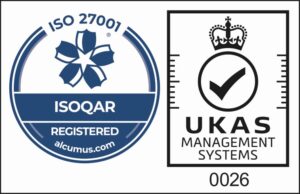IT leaders face the daunting, ongoing task of navigating a complex web of cybersecurity threats and compliance standards. The need to strike a delicate balance between robust security measures and adherence to compliance regulations becomes more critical than ever. Conducting IT security audits to ensure a harmonious approach to safeguarding sensitive information should be high up the priority list of any IT leader.
Understanding the Landscape
To create a resilient security and compliance framework, IT leaders must first comprehend the dynamic nature of cyber threats and the evolving landscape of regulations. Stay informed about the latest cybersecurity trends, emerging threats, and regulatory changes to proactively adapt your strategies.
Embracing Cybersecurity Best Practices
Implementing a robust cybersecurity strategy is the cornerstone of a secure IT environment. Key practices include:
- Regular employee training on cybersecurity awareness.
- Strong password policies and multi-factor authentication.
- Regular software updates and patch management.
- Network segmentation to limit the impact of potential breaches.
Navigating Compliance Standards
Compliance with industry-specific standards such as GDPR, HIPAA, or ISO 27001 is non-negotiable. Tailor your security measures to align with these standards, ensuring that your organisation not only meets legal requirements but also builds trust with customers and partners.
Data Protection Strategies
With data becoming the lifeblood of businesses, it’s imperative to establish robust data protection strategies. Encrypt sensitive information, implement access controls, and regularly audit data handling processes to identify and rectify potential vulnerabilities.
Importance of IT Security Audits
Conducting regular IT security audits is akin to a health check for your organisation’s digital infrastructure. Audits help identify vulnerabilities, assess the effectiveness of existing security measures, and ensure alignment with compliance standards. Schedule audits at regular intervals to maintain a proactive stance against cyber threats.
Building a Culture of Security
Security is not just a technological challenge; it’s a cultural one. Foster a culture of security awareness among your team members. Encourage open communication about potential risks and empower employees to be vigilant against cyber threats.
Collaboration with Compliance Experts
Engage with compliance experts and legal professionals to stay abreast of changes in regulations. Collaborating with external consultants can provide valuable insights, ensuring that your organization remains ahead of the curve in compliance adherence.
Investing in Advanced Technologies
Leverage cutting-edge technologies such as artificial intelligence and machine learning to enhance your cybersecurity measures. These technologies can help detect and respond to threats in real-time, significantly strengthening your overall security posture.
Harmonising security and compliance is not just a regulatory obligation; it’s a strategic imperative for the survival and success of modern businesses. As technology continues to advance, the proactive pursuit of security and compliance will ensure that your organisation remains resilient in the face of evolving cyber threats.




